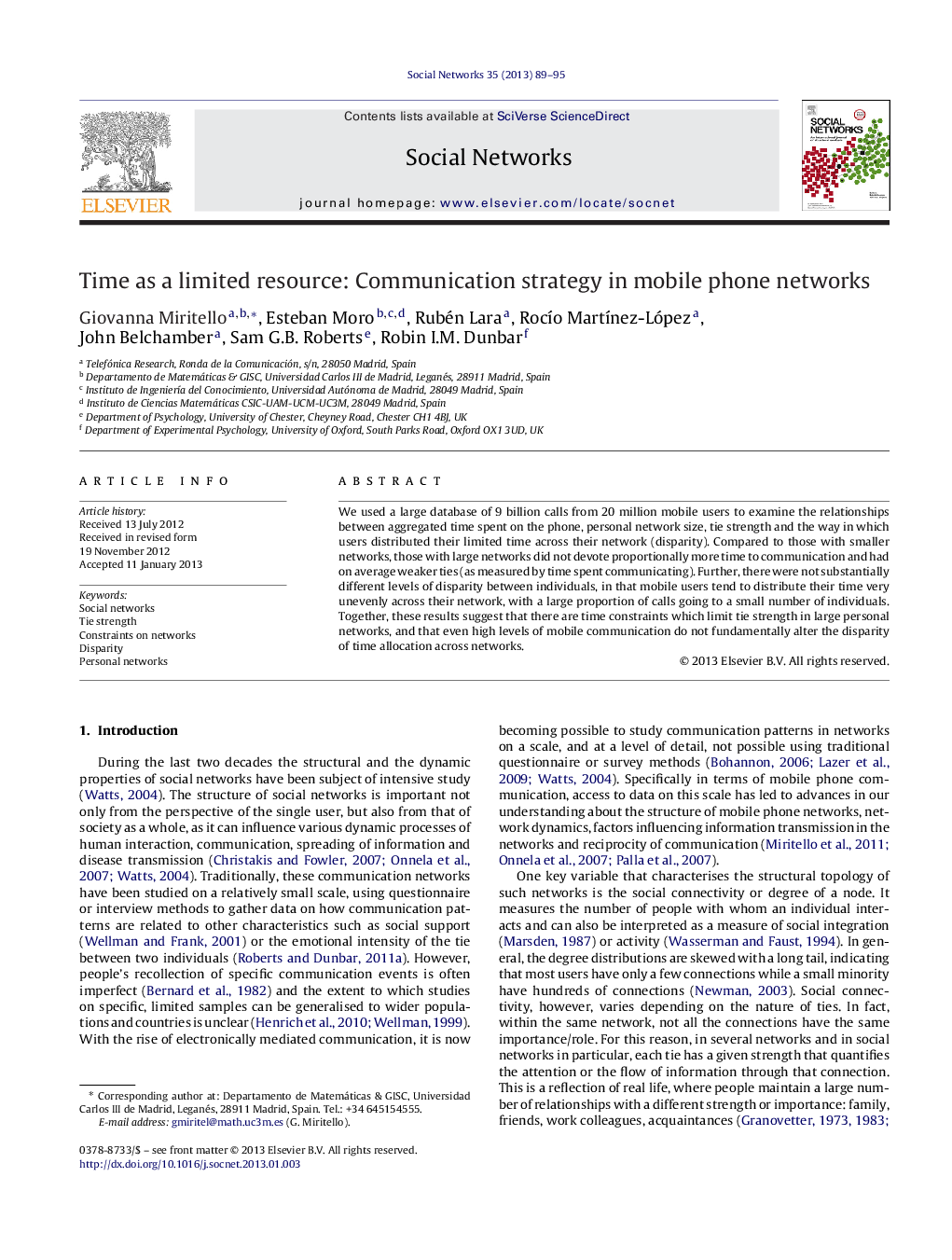| کد مقاله | کد نشریه | سال انتشار | مقاله انگلیسی | نسخه تمام متن |
|---|---|---|---|---|
| 1129539 | 955265 | 2013 | 7 صفحه PDF | دانلود رایگان |

We used a large database of 9 billion calls from 20 million mobile users to examine the relationships between aggregated time spent on the phone, personal network size, tie strength and the way in which users distributed their limited time across their network (disparity). Compared to those with smaller networks, those with large networks did not devote proportionally more time to communication and had on average weaker ties (as measured by time spent communicating). Further, there were not substantially different levels of disparity between individuals, in that mobile users tend to distribute their time very unevenly across their network, with a large proportion of calls going to a small number of individuals. Together, these results suggest that there are time constraints which limit tie strength in large personal networks, and that even high levels of mobile communication do not fundamentally alter the disparity of time allocation across networks.
► We use a large database of mobile calls across a long period of almost 1 year.
► We examine how users distributed their calling time across their social network.
► Users with large networks spend less time on average with their connections.
► All users distributed their limited time very unevenly across their networks.
► Mobile use does not alter patterns of human communication.
Journal: Social Networks - Volume 35, Issue 1, January 2013, Pages 89–95